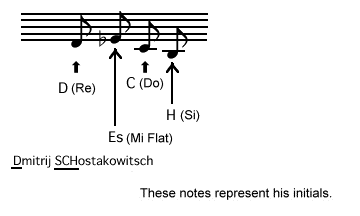

 字體:小 中 大
字體:小 中 大 |
|
|
|
| 2011/10/11 23:19:50瀏覽1462|回應0|推薦0 | |
| 指揮/ 簡文彬
大提琴/ 史蒂芬‧伊瑟利斯 Steven Isserlis http://nso.ntch.edu.tw/program/detail/id/225 李子聲:《色XI》管弦樂曲 (世界首演) 蕭斯塔科維奇:第一號大提琴協奏曲 史特勞斯:《英雄生涯》 簡文彬2001~2007年間接掌NSO音樂總監,6年任期內開創出樂團的新氣象,提升專業水準、樹立品牌並擴展曲目。他將與英國知名大提琴家伊瑟利斯演出蕭斯塔科維奇的第一號大提琴協奏曲,此曲為蕭斯塔科維奇獻給他的好友、已故大提琴家羅斯托波維奇的作品,是現代大提琴曲目的代表作之一。中生代作曲家李子聲的新作《色XI》管絃樂曲,以營造細緻的聲響氛圍,追求內省式回歸聽覺的本位。壓軸的理查.史特勞斯《英雄生涯》則是集其交響詩大成,被推崇為傳記音樂的典範,恢弘大氣、戲劇性十足,被視為作曲家本身的生命寫照。 ★2011/10/22 SAT 19:30 NSYSU Sun Yat-sen Hall, Kaohsiung 2011/10/23 Sun. 14:30 National Concert Hall, Taipei The Cello Concerto No. 1 in E Flat Major, Opus 107, was written by Dmitri Shostakovich in 1959. He wrote it for Mstislav Rostropovich, who memorized the work in four days and gave the premiere in Leningrad under Yevgeny Mravinsky, on October 9, 1959 in the Large Hall of the Leningrad Conservatory. The first recording was made for the CBS label by Rostropovich accompanied by the Philadelphia Orchestra conducted by Eugene Ormandy in November of the same year. http://www.books.com.tw/exep/cdfile.php?item=0020107036 蕭士塔高維奇的第一號大提琴協奏曲是他中期以後的作品,他是聽到浦羅高菲夫的交響協奏曲後,有了靈感才創作此曲的,此曲完成於他第十和第十一號交響曲之後,此曲採用了他著名的DSCH主題(DSCH motif, The motif occurs in many of his works, : Symphony No. 10 in E minor, the String Quartet No. 8 in C minor, the Violin Concerto No. 1 in A minor, the Cello Concerto No. 1 in E flat Major, the Symphony No. 15 in A major and the Opus 61 Piano Sonata No. 2 in B minor) 作為動機,再引用了蘇聯獨裁者史達林最愛的喬治亞民謠"蘇莉可"(Suliko (Georgian: სულიკო) is a Georgian female and male name meaning 'soul'. It is also the title of a love poem written in 1895 by Akaki Tsereteli, which became widely known throughout the Soviet Union as a song performed with music composed by Varenka Tsereteli. In that form it was often performed on radio during Joseph Stalin's rule, reputedly because it was his favorite. It was translated to and performed in multiple languages including Russian, Ukrainian, Polish, English and German.)的片段(文末有資料),此曲其實有著很強烈的控訴意圖。  http://en.wikipedia.org/wiki/Cello_Concerto_No._1_(Shostakovich) Scoring and structureThe concerto is scored for two flutes (2nd doubling piccolo), two oboes, two clarinets (each doubling B-flat and A), two bassoons (2nd doubling contrabassoon), one horn, timpani, celesta, and strings. The work has four movements in two sections, with movements two through four played without a pause: A typical performance runs approximately 28 minutes in length. [edit]AnalysisThe first concerto is widely considered to be one the most difficult concerted works for cello, along with the Sinfonia Concertante of Sergei Prokofiev, with which it shares certain features (such as the prominent role of isolated timpani strokes). Shostakovich said that "an impulse" for the piece was provided by his admiration for that earlier work.[1] There seems to be a lot of confusion in the literature about the nature of the next quotation. The quote itself is minuscule – a four-note motive from Shostakovich’s score for the 1948 film “The Young Guard”:一開始那幾個音
The first movement begins with its four-note main theme derived from the composer's DSCH motif, although the intervals, rhythm and shape of the motto are continually distorted and re-shaped throughout the movement. It is also related to a theme from the composer's score for the 1948 film The Young Guard, which illustrates a group of Soviet soldiers being marched to their deaths at the hands of the Nazis. It is set beside an even simpler theme in the woodwind, which reappears throughout the work: The woodwind theme taking on aspects of the DSCH theme itself just before the introduction of the second subject: The DSCH motive recurs throughout the concerto (except in the second movement), making this concerto have a cyclic structure. One further theme (at bar 96), originating in folk lullabies, is also found in the lullaby sung by Death to a sick child in Mussorgsky's Songs and Dances of Death.
The cadenza stands as a movement in itself. It begins by developing the material from the cello's second theme of the second movement, twice broken by a series of slow pizzicato chords. After the second time this is repeated, the cello's first theme of the second movement is played in an altered form. After the third time the chords are repeated, a continual accelerando passes through allegretto and allegrosections to a piu mosso section. These sections are frequented by the first DSCH motive. The piu mosso section features fast ascending and descending scales. The final movement begins with an ascent to a high D. The oboe begins the main theme, which is based on the chromatic scale. The cello repeats it, and presents a new theme. The cellos of the orchestra repeat this, accompanied by the solo cello playing fast sixteenth notes. At bar 105, a distorted version of Suliko, a song favoured by Stalin and used by Shostakovich in Rayok, his satire on the Sovietsystem, is played. Then, the flutes play the first theme again. A new theme played in triple time is presented by the orchestra, which is repeated by the cello. Then, the orchestra repeats and alters the theme. The horn, bass instruments and solo cello follow. The bass instruments play a modified version of the theme, which is repeated by the solo cello after. The cello begins playing a new theme that uses the exact same notes as the DSCH motif. The modified version that was just played by bass instruments is repeated by the solo cello, accompanied by oboes playing fragments of the new DSCH theme. The first theme of this movement is played by the string section after, followed by the new DSCH theme in the woodwinds. The DSCH theme of the first movement is played, answered by the cello. After the third time this is played, the horn plays the theme again in longer notes. Then, the cello plays a passage from the first movement, which is followed by the first theme of this movement played by the woodwinds. This is followed by the first theme of the first movement played by the cellos of the orchestra, accompanied by scales in the solo cello. Then, a modified form of the first theme of this movement is played in the cello. The concerto ends with seven timpani strokes. &&&&&&&&&&&&&&&&&&&&&&&&&&&&&&&&
Rostropovich plays Shostakovich Cello Concerto No. 1 - 1/4 Shostakovich: Cello Concerto n.1 op. 107 - Mischa Maisky |
|
| ( 不分類|不分類 ) |










